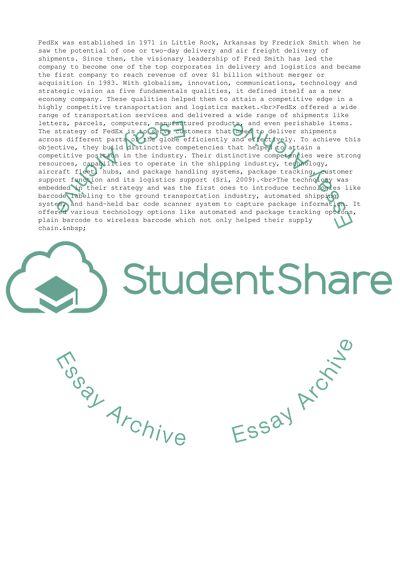Cite this document
(Analysis of FedEx Research Paper Example | Topics and Well Written Essays - 3000 words, n.d.)
Analysis of FedEx Research Paper Example | Topics and Well Written Essays - 3000 words. Retrieved from https://studentshare.org/business/1731773-global-corporate-strategy
Analysis of FedEx Research Paper Example | Topics and Well Written Essays - 3000 words. Retrieved from https://studentshare.org/business/1731773-global-corporate-strategy
(Analysis of FedEx Research Paper Example | Topics and Well Written Essays - 3000 Words)
Analysis of FedEx Research Paper Example | Topics and Well Written Essays - 3000 Words. https://studentshare.org/business/1731773-global-corporate-strategy.
Analysis of FedEx Research Paper Example | Topics and Well Written Essays - 3000 Words. https://studentshare.org/business/1731773-global-corporate-strategy.
“Analysis of FedEx Research Paper Example | Topics and Well Written Essays - 3000 Words”, n.d. https://studentshare.org/business/1731773-global-corporate-strategy.


